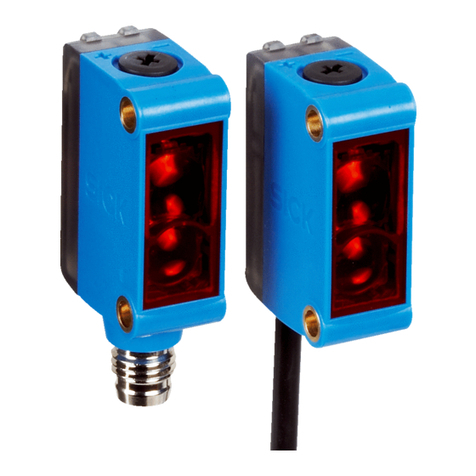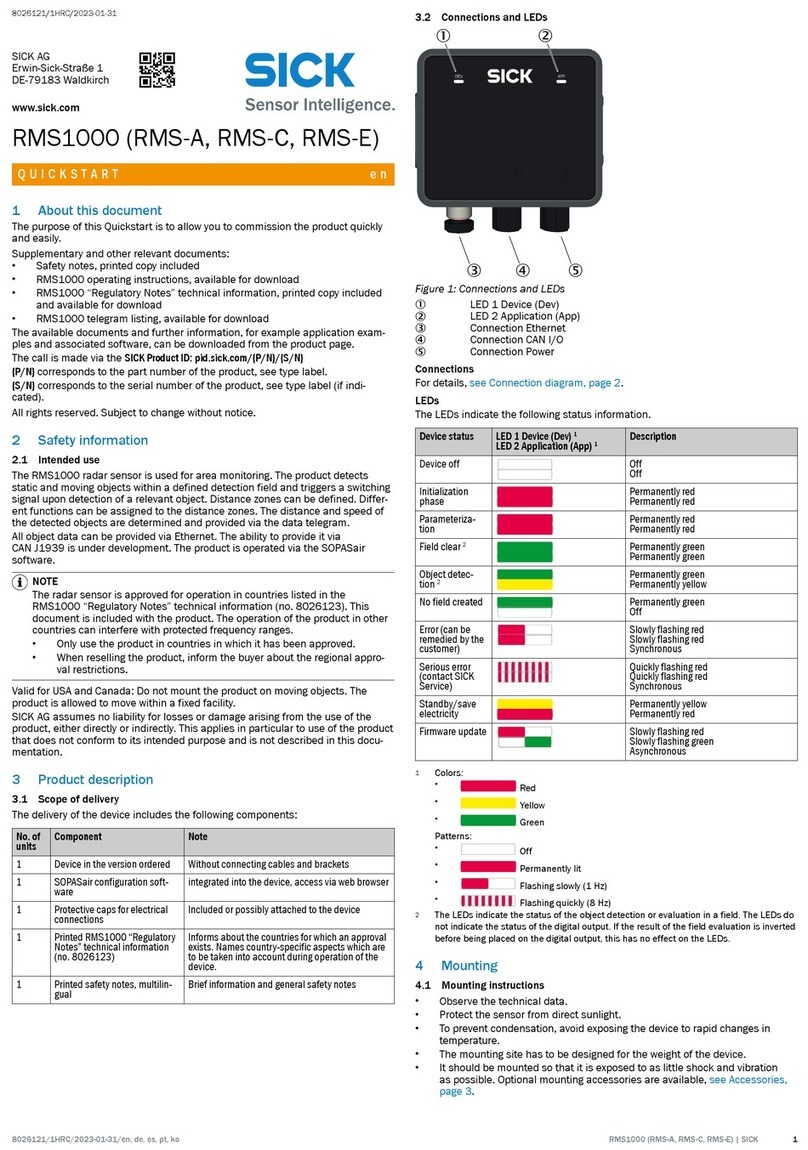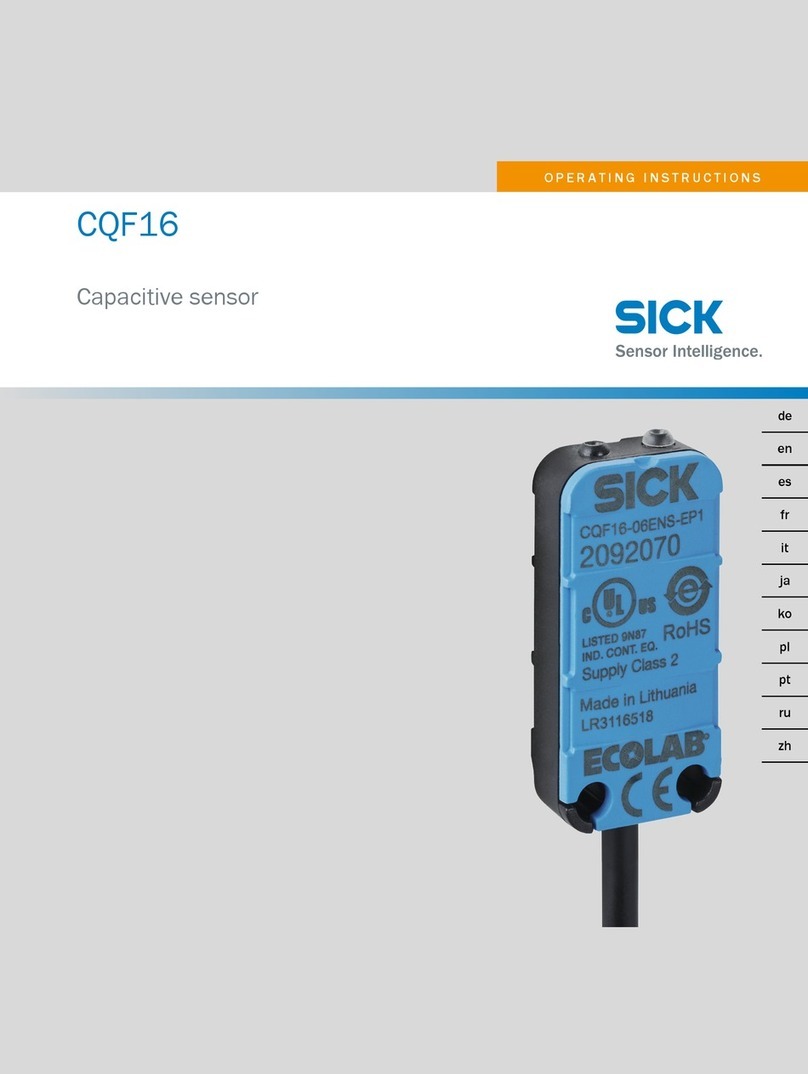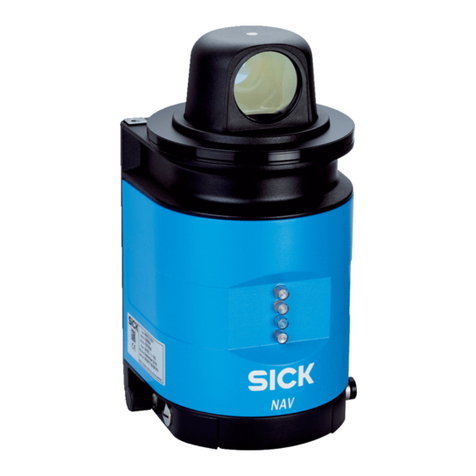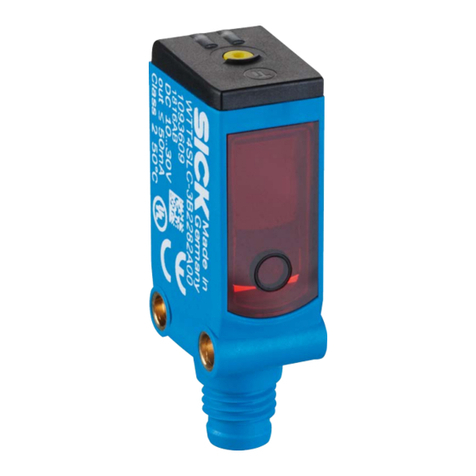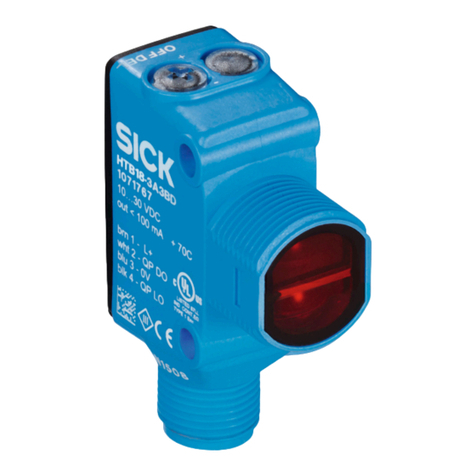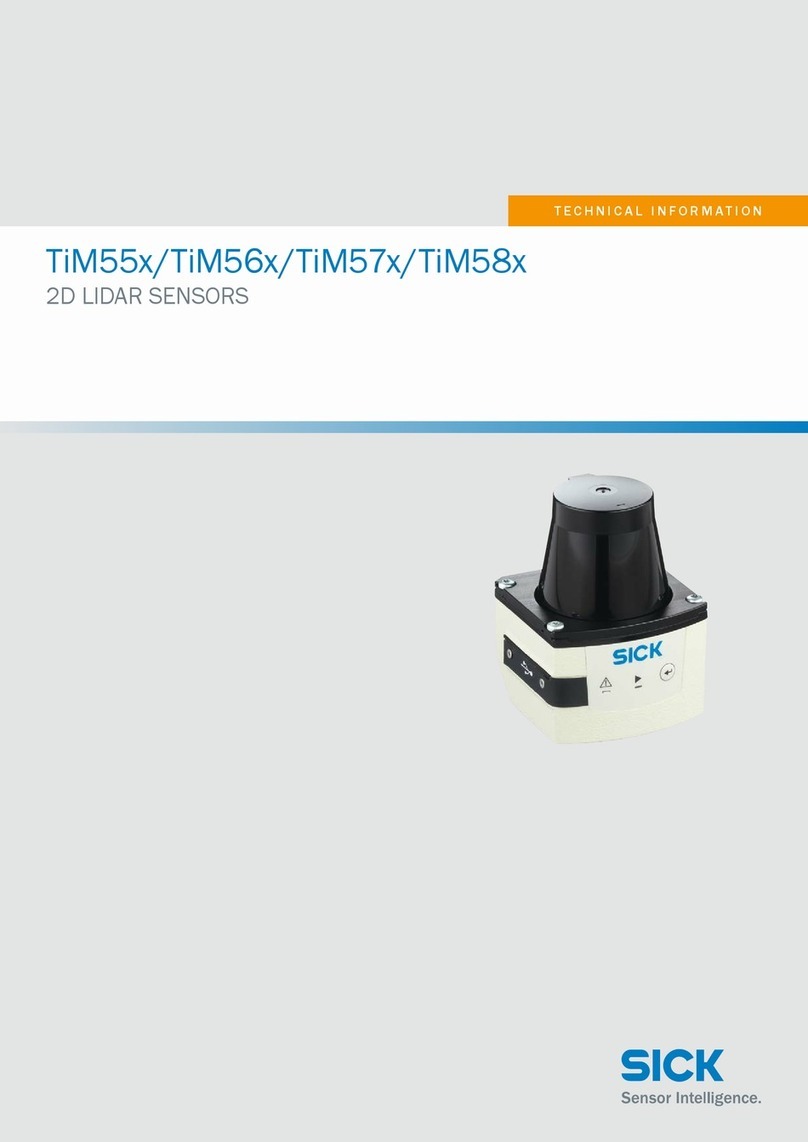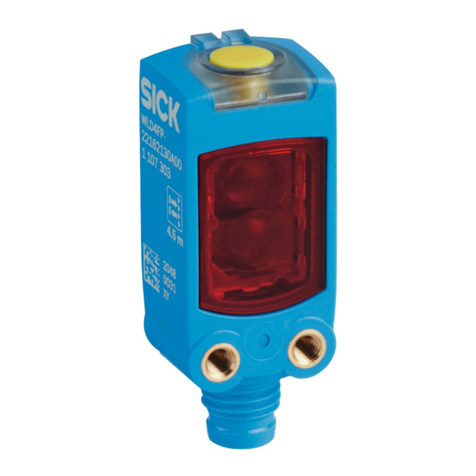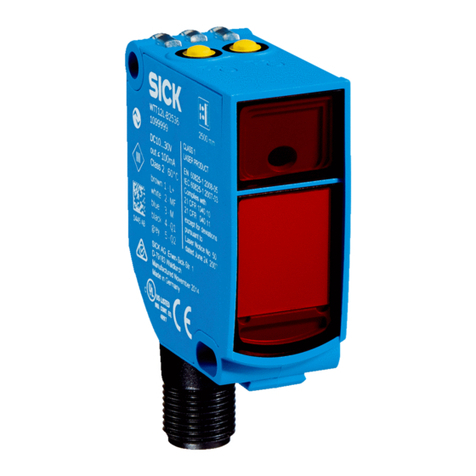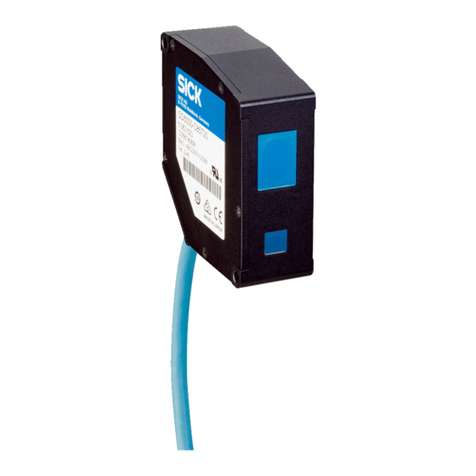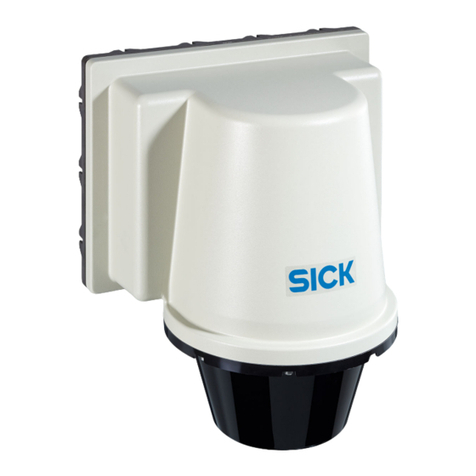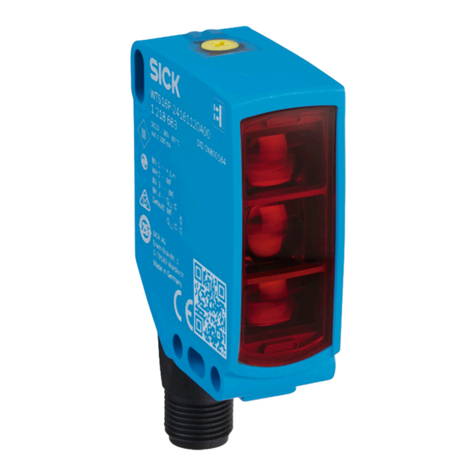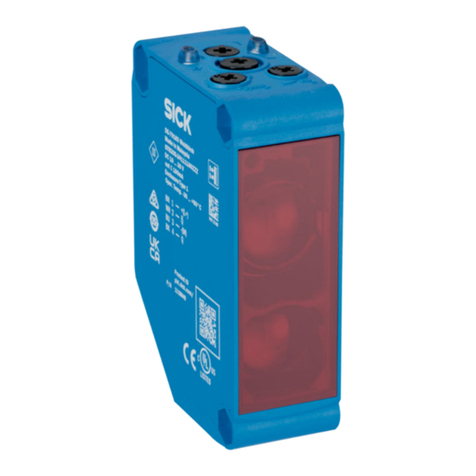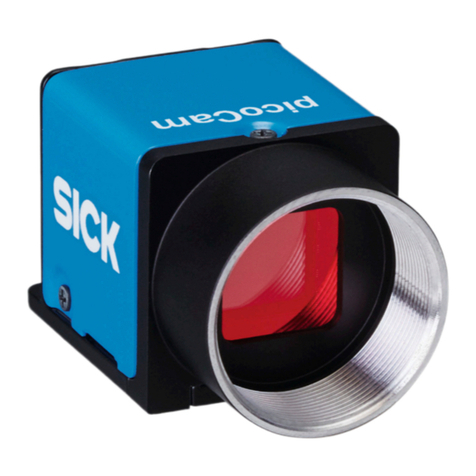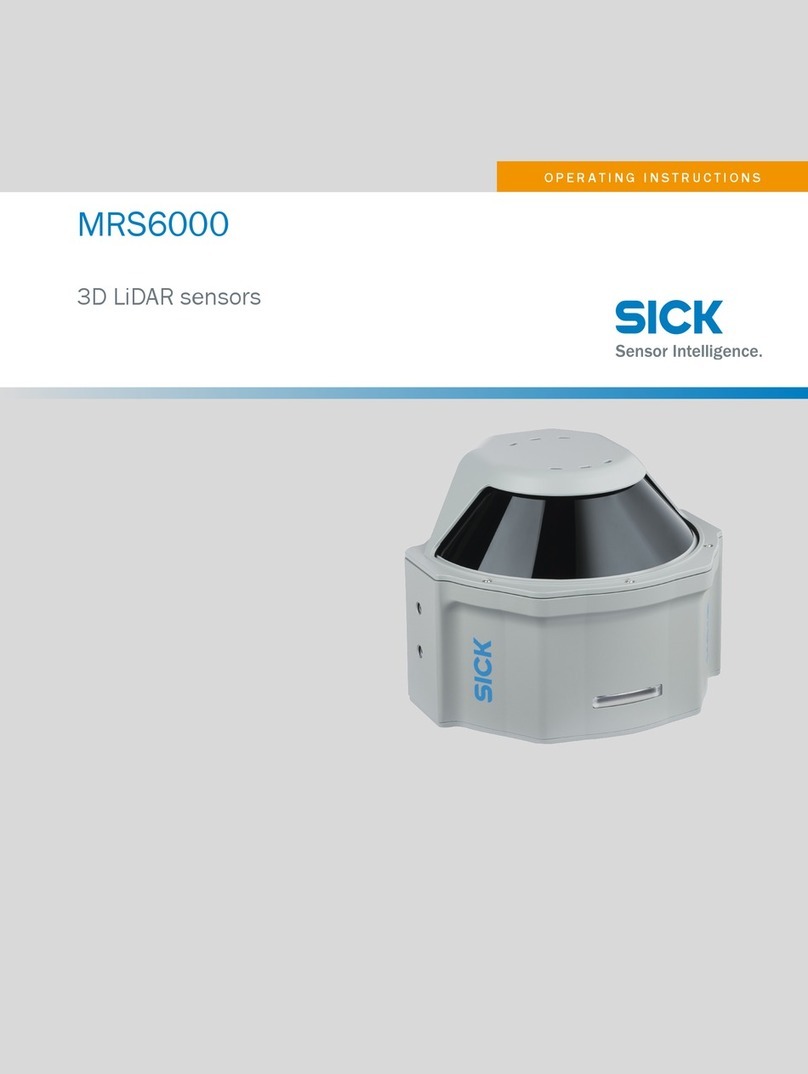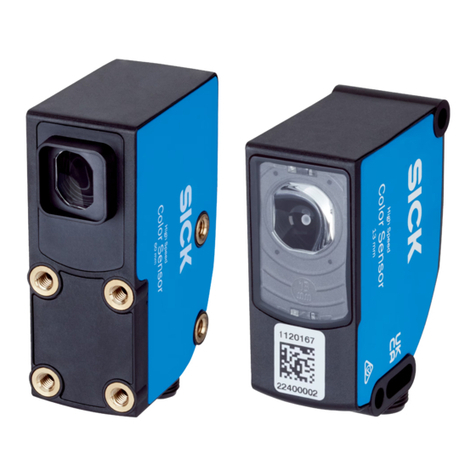
8016903/ZP97/2017-07-27 • Subject to change without notice • SICK AG • Waldkirch • Germany • www.sick.com TIM35X/TIM36X | SICK 4
aCAUTION
Laser radiation!
CLASS 1 LASER PRODUCT
The TiM corresponds to laser class 1 (eye-safe).
The laser beam is not visible to the human eye.
CAUTION – the use of controls, or adjustments or perfor-
mance of procedures other than those specied herein may
result in hazardous radiation exposure.
>Do not open the housing (opening the housing will not
switch off the laser).
>Pay attention to the laser safety regulations as per
IEC 60825-1 (latest version).
aMISE EN GARDE
Rayonnement laser !
APPAREIL À LASER DE CLASSE 1
Le TiM est conforme à la classe laser 1 (sécurité des yeux).
Le rayon laser n’est pas visible pour l’oeil humain.
PRUDENCE – tout usage de commandes, réglages ou toute
application de procédures autres que ceux décrits dans ce
document peut entraîner une exposition dangereuse au
rayonnement.
Attention – L’utilisation des commandes ou réglages ou l’ex-
écution des procédures autres que celles spéciées dans les
présentes exigences peuvent être la cause d’une exposition à
un rayonnement dangereux.
>Ne pas ouvrir le boîtier. (La diode laser n’est pas désac-
tivée en cas d’ouverture du boîtier)
>Se conformer aux dernières consignes de protection en
date contre le rayonnement laser IEC 60825-1 (dernière
version).
Additional information see “Technical data, page 4”.
Status indicators, functions
Status displays
LED a
(red) LED b
(green)
Status
–ODevice ready/monitoring mode
OOField infringement
–Teach-in – Start
OOTeach-in – End of advance warning phase
60-second teach-in phase
–Teach-in – End of teach-in phase
–Errors
– – Device without supply voltage
O = illuminated; = ashing
Field set factory settings – switching inputs
Field
set Switching inputs Field shape
Default size of eld 1
IN 1 IN 2 IN 3 IN 4
1 0000Rectangle1), segmented
L: 1 m, W: 2 m
21000Rectangle1), segmented
L: 1.25 m, B: 2 m
3 0100Rectangle1), segmented
L: 1.5 m, B: 2 m
4 1100Rectangle1), segmented
L: 1.75 m, B: 2 m
5 0010Rectangle1), segmented
L: 1 m, W: 2 m
6 1010Rectangle1), segmented
L: 1.25 m, B: 2 m
70110Rectangle1), segmented
L: 1.5 m, B: 2 m
8 1110Rectangle1), segmented
L: 1.75 m, B: 2 m
9 0001Rectangle1), segmented
L: 1 m, W: 2 m
10 1 0 0 1 Rectangle1), segmented
L: 1.25 m, B: 2 m
11 0 1 0 1 Rectangle1)2), segmented
L: 1.5 m, B: 2 m
12 1101Rectangle1), segmented
L: 1.75 m, B: 2 m
13 0 0 1 1 Rectangle1), segmented
L: 1 m, W: 2 m
14 1 0 1 1 Rectangle1), segmented
L: 1.25 m, B: 2 m
15 0 1 1 1 Rectangle1), segmented
L: 1.5 m, B: 2 m
16 1 1 1 1 Rectangle1), segmented
L: 1.75 m, B: 2 m
L = length, W = width
1) Default setting, starting shape can be modied as required
Input level
• PNP: Low (in resting position): ≤ 2 V, high (in working
position): ≥ 8 V
• NPN: Active low (in working position): ≤ (IN 9...28 V) – 8 V,
inactive high (in resting position) > (IN 9...28 V) – 2 V
Assignment of infringed elds - switching outputs
Fields of a eld set Switching outputs
OUT 1 OUT 2 OUT 3
Fields 1, 2, and 3 infringed Active Active Active
Fields 2 and 3 infringed Deacti-
vated Active Active
Field 3 infringed Deacti-
vated
Deacti-
vated
Active
All elds free Deacti-
vated
Deacti-
vated
Deacti-
vated
Field 1: inner, eld 2: center, eld 3: outer
Active: in working position; deactivated: in resting position
Output level
• PNP: The level of the switching outputs OUT 1 ... OUT 3 is
active low (in resting position: high, in working position: low
(eld infringed)).
• NPN: The level of the switching outputs OUT 1 ... OUT 3 is
active high (in resting position: low, in working position:
high (eld infringed)).
All elds of a eld set are also deemed to be infringed during
switching on, booting, in the event of an error, and when the
device is switched off.
The OUT 4 switching output works with the following levels:
Function Level PNP Level NPN
Device Ready High Low
Index signal (15 Hz), corresponds to
measurement at 90° Low-Peaks High-Peaks
Errors Low High
Technical data
Model name TiM351-2134001 (Part no. 1067299)
TIM361-2134101 (Part no. 1071399)
Scanning range Radial, aperture angle 270°
Angular resolution TiM35x: 1°
TiM36x: 0.33°
Scanning fre-
quency
15 Hz (15 scans/s)
Response time Typical 67 ms (1 scan)
Scanning range 0.05 m to 10 m; typically 8 m at 10%
remission1)
Remission Typical 4% ... > 1,000% (reector)
Physical Minimum
object size
(cross-section)
213 mm (TiM35x) / 121 mm (TiM36x) for a
scanning range of 8 m,
112 mm (TiM35x) / 66 mm (TiM36x) for a
scanning range of 4 m,
61 mm (TiM35x) / 38 mm (TiM36x) for a
scanning range of 2 m and 10% remission
Measuring error Statistical (1 s): ± 20 mm
Systematic: ± 60 mm
Temperature drift 0.5 mm/K
Model name TiM351-2134001 (Part no. 1067299)
TIM361-2134101 (Part no. 1071399)
Ambient light
immunity
80,000 lx (indirect)
Light source Laser diode, infrared (λ = 850 nm)
Device laser class Laser class 1 according to EN 60825-1:
20142), eye-safe
Max. radiated
power
2.0 W (TIM35x)
1.5 W (TIM36x)
Max. pulse
duration
5 ns
Field evaluation 1 evaluation mode with 1 eld set (up to 3
detection elds), optional separate evaluation
for 1 reference contour eld
Field infringement signaling via a combination
of 3 switching outputs.
Number of eld
sets
16, each with 3 exible, congurable elds,
one of which can be used as a reference
contour eld
Aux interface USB 2.0 for conguration, connecting cable
max. 3 m.
Ethernet interface Max. data rate: 10 Mbit and 100 Mbit, cable
length limited to max. 100 m
Switching inputs PNP: 4 x IN (Ue = max. 28 V, Ie = max. 5 mA),
opto-decoupled, debouncing time approx.
10 ms
NPN: Common reference potential 9 ... 28 V
Switching outputs 4 x OUT (each Ia ≤ 100 mA), not galvanically
isolated from the supply voltage, short-circuit
protected/temperature protected
Congurable for OUT 1 .... OUT 3:
Response time (67 ms ... 30 s)
Holding time (0 ms ... 10 s)3)
Electrical connec-
tions
1 x 12-pin M12 power male connector
1 x 4-pin. M12 Ethernet socket
1 x micro USB socket, type B (covered)
Function key Teach-in (eld set 1 eld contour)
Optical indicators 2 x LED
Supply voltage DC 9 ... 28 V, SELV an PELV acc. to
IEC 60364-4-41: 2005-12
Power consump-
tion
4 W (with switching outputs without load)
16 W (with four loaded switching outputs)
Housing Lower part: Die-cast aluminum
Optics hood: Polycarbonate with scratch-proof
coating
Weight Approx. 250 g without cables
Electrical safety According to According to IEC 61010-1 (ed.3)
Protection class III according to EN 61140: 2006-08
IEC 61010-1 (ed.3)
Enclosure rating IP 67 (EN 60529: 1991-10/A2: 2000-02)
No specied enclosure rating for opened
"Aux interface" connection and/or plugged in
USB cable!
EMC Radiated emission: Residential area according
to EN 61000-6-3: 2007-01
Electromagnetic immunity: Industrial environ-
ment according to
EN 61000-6-2: 2005-08
Vibration resis-
tance
According to EN 60068-2-6: 2008-02
Shock resistance According to EN 60068-2-27: 2009-05
Ambient tempera-
ture
Commissioning/switching on: –10 ... +50 °C
Operation: –25 °C to +50 °C
Storage: –40 °C to +75 °C
Temperature
change
According to EN 60068-2-14: 2009-07

